Shanghai's Nanjing Road-Shopping Seen No Where Elseby Harold Stephens.
Travel Correspondent for Thai Airways International
Imagine a busy thoroughfare that stretches for ten endless kilometres, and every metre of the way is lined with shops, department stores, emporium or else tiny wayside stalls. Then in front of the stores, vendors set up portable stands on the sidewalks, and at every corner there is someone is trying to sell you something. That's shopping at its best.
The street is Nanjing Lu, or Nanjing Road, and it cuts right through the centre of Shanghai, China's second largest and most exciting city. It begins at the famous Bund facing the Huangpu River and extends westward through town via the former French Concession to the Jing'an Temple.
Ever since the latter part of the 19th century, when Shanghai was transformed into an European city, Nanjing Road had been a street of exclusive shopping for foreigners who lived in the International Settlement and for the traders and visitors who came to the city. Then they called the river front area the Bund; today it's called Zhongshan Road. And Nanjing Road was known to everyone as Bubbling Well Road.
The well has long since been sealed over, and the name changed, but the majority of the shops and stores are still pre-war with their brass plated names out front. Then come the new department stores in the style of Sears and Mitsukoshi, and right next door might be bargain-priced garment stalls. These big named stores that once used to be exclusive to foreigners now cater to crowds of eager patrons clamouring for the latest things in short supply, namely Western goods.
Times may have changed but Nanjing Road continues to be, without doubt, the best known shopping street in China, if not in all the world. In one shopping emporium alone, the Shanghai Number One Department Store, more than 300,000 customers come each day to shop. A couple city blocks in size, it's the largest emporium in China. Yet Number One is but one of many hundred of such shops on Nanjing Road.
Some stores, like the Sincere Department Store that dates back to Old Shanghai, has mostly imported items that are expensive but this doesn't seemed to stop local shoppers.
Before the 1949 revolution, Nanjing Road was a mixture of restaurants, nightclubs and coffin makers. The most prestigious department stores were there, and still are, including Wing On's (now the Number 10 Department Store), Sun Sun's (now the Number 1 Food Store), and The Sun (now the Number One Department Store).
A chain store that's famous in China is the Friendship Stores. They are in every city that caters to foreigners and tourists, but the largest and best known one in China is the Shanghai Friendship Store. It occupies six stories of its own building near the Bund, a short walk from the Peace Hotel. It has a wide range of Chinese consumer products and a small selection of imported ones. Prices are fixed although I heard when purchasing expensive antiques prices can be negotiated. It has a wide selection of food, books, garments, jewelry, arts and crafts, antiques, fabrics, music instruments and other gift items.
Chinese consumerism on Nanjing Road is not limited to clothing stores or silk shops, which at times offer the same products more cheaply than in the Friendship Shores, but also shops which sell things .such as theatre props and Chinese musical instruments (114 Nanjing Road), and a stamp shop opposite the Xinhua Bookshop that sells rare stamps.
The central area bounded by Nanjing Road and the Bund is a good place to rummage around. Fuzhou Lu is an alleyway to explore, with bookshops and small restaurants which were once a collection of teahouses covering for brothels.
By day, from 9 am to 6 pm, only buses are allowed on Nanjing Road, which otherwise turns into a pedestrian thoroughfare. At night it becomes a street of lights with eye-catching window displays and neon signs.
My first morning in Shanghai I set out soon after dawn to walk along Nanjing Road. The air was crisp and there wasn't a shopper to be seen. Large sections of the street in front of the J.C. Mandarin Hotel, where I was staying, were blocked off, and here people were dancing in the street. Music was piped in over a loud speaker.
I continued my walk down Nanjing Road to Renmin Square and Renmin Park, once the Shanghai Race course. In front of the old Racecourse Clubhouse which is now the Shanghai Municipal Library, there was more dancing in the street. Couples of every age, both young and old, fathers and daughters, mothers and son, swayed to the tunes of the 1940s and 50s. One man swung his partner to where I was standing, and in perfect English said, "Would you like to dance with my wife." I was too taken back to accept.
Renmin Park is Shanghai's answer to Tiananmen Square in Beijing. From racecourse to park, the desert like expanses of pavement at Renmin Square is where all those large meetings and rallies were held back in the '60s and '70s. In April 1969, 2.7 million people poured in here to demonstrate against the Soviet Union after clashes on the border--though even that figure didn't top the peaceful 10 milliongathered for May Day celebrations in Beijing in 1963. The area is also used for para-military training; under the Square is a large air-raid shelter.
Even with the shops closed it was an interesting walk to the Bund. The streets of Shanghai are well swept and remarkably clean. In a city with 13 million people there seems to be order. Nor, as one might suspect, is it noisy. No loud motorbikes or honking horns. Buses are electric powered from overhead lines. As a result there is little pollution.
I was astounded at the beauty of Shanghainese girls I saw in the shops and walking along Nanjing Road. They are most attractive, many dressed in furs and high boots. They wear little makeup and they have pale, almost white, complexions, almost like porcelain. I remembered reading that Shanghai has the best reputation in China for the art of hairdressing. And the women do pride themselves for their style. The fashionable shops along Nanjing Road will testify to this.
There are also a number of speciality shops along Nanjing Road. The Duoyunxuan Painting and Calligraphy shop at 422 Nanjing Road; the Wengfang Sibao, or Four Treasures of the Studio shop in the Jinjiang compound; the Shanghai Jingdezhen Porcelain Artware Service at 1175 Nanjing Road.
I mentioned that Nanjing Road cuts through a section of the former French Concession which was founded in 1862. The area has kept its own character with its French-inspired architecture and the many avenues. Huaihai Lu, formerly Avenue Joffre, once the Champs Elysees of the East and the counterpart of Nanjing Street, with its shade-giving plane trees, is perhaps the more pleasant choice for shopping or just strolling. It has as many shops and cafes, which still reflect the French or Russian influence. The reason, many White Russian emigres once live here.
A shopping area I found most interesting was Dongtai Lu, or Dongtai Road. It's listed on the city map as the official antique market. What would you like to buy, ancient gramophones, hand operated Singer sewing machines, Bakelite tube radios,
blue-and-white pottery, pocket watches that tell the phases of the moon as well as the time, old cameras with bellows lens, ancient movie projectors, inside-painted snuff bottles, carved ivory Chinese chops, coins, chest sets, leather suit cases, apothecary bottles, and just about anything you can imagine.
Shanghai also has a Sunday market and a flee market, and now all the modern hotels have their shopping plazas.
Harold Stephens
Bangkok
E-mail: ROH Weekly Travel (hstephens_1@yahoo.com)
Note: The article is the personal view of the writer and does not necessarily reflect the view of Thai Airways International Public Company Limited. | 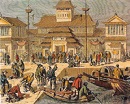
Shanghai before the war | | 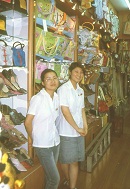
Where shopping prevail | | 
The famous Bund | | 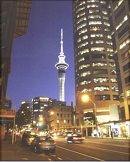
Shanghai at night | | 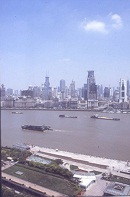
A place to stop for tea
| | 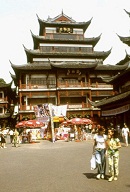
Not all is new Shanghai
| | 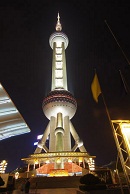
Modern Shanghai
|
|





